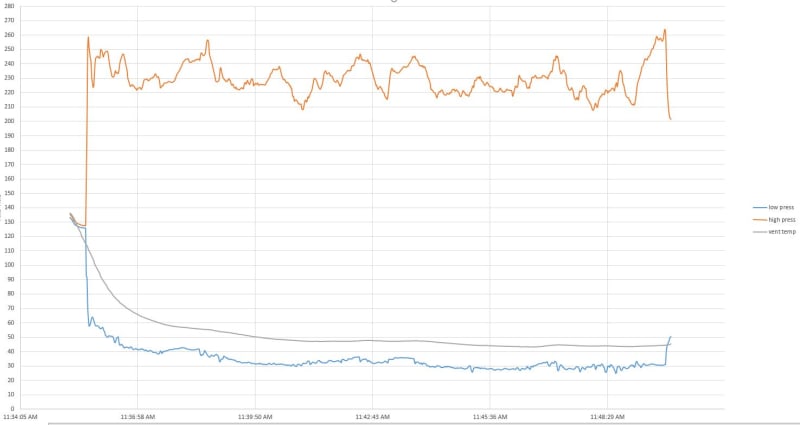I've long been extremely interested in automotive AC system/design but have repeatedly failed to find any substantial information on the topic in books or other online research. I have talked to other engineers that worked for automotive companies and worked on AC systems but to my knowledge everything they did is held tightly by the manufacturers.
I live in the hottest climate in north America and I have long dreamed of modifying my cars AC system to pump out cold air consistently and quickly even in the sweltering heat. I don't care if I have to sacrifice fuel consumption, what I really want is extremely FAST cold air after starting up my car that's been sitting in the sun.
My Lexus I have now does an excellent jot after about 15 minutes of driving, but in the first 15 minutes it slowly pumps down the vent outlet temperature from a starting 150 degrees F down to 38 degrees F. I want it to reach 38 degrees F at the vent within minutes of starting the AC. I know its possible because I have been in other vehicles that could do it (2017 Ford Edge) extremely cold and fast. So my big question is - what's different? What makes one system able to do this and not the other? Both are in spec and operating at factory refrigerant levels, all components working properly, radiator fan working etc. Even the compressors and condensers don't appear to be much different in size at all. It just takes more time than I want in my Lexus to get the vent temp cold. Once it is cold it is very cold and maintains it even in sweltering heat.
My trips are typically less than 15 minutes so its annoying to not have ice cold air blowing when I jump in and out of the car for short trips.
I cant find any literature that goes into component sizing or what things affect pump down time. Do I need to increase the mass flow rate of the refrigerant? Do I need to calibrate the TXV differently? I just need help finding access to the technical information.
I live in the hottest climate in north America and I have long dreamed of modifying my cars AC system to pump out cold air consistently and quickly even in the sweltering heat. I don't care if I have to sacrifice fuel consumption, what I really want is extremely FAST cold air after starting up my car that's been sitting in the sun.
My Lexus I have now does an excellent jot after about 15 minutes of driving, but in the first 15 minutes it slowly pumps down the vent outlet temperature from a starting 150 degrees F down to 38 degrees F. I want it to reach 38 degrees F at the vent within minutes of starting the AC. I know its possible because I have been in other vehicles that could do it (2017 Ford Edge) extremely cold and fast. So my big question is - what's different? What makes one system able to do this and not the other? Both are in spec and operating at factory refrigerant levels, all components working properly, radiator fan working etc. Even the compressors and condensers don't appear to be much different in size at all. It just takes more time than I want in my Lexus to get the vent temp cold. Once it is cold it is very cold and maintains it even in sweltering heat.
My trips are typically less than 15 minutes so its annoying to not have ice cold air blowing when I jump in and out of the car for short trips.
I cant find any literature that goes into component sizing or what things affect pump down time. Do I need to increase the mass flow rate of the refrigerant? Do I need to calibrate the TXV differently? I just need help finding access to the technical information.

